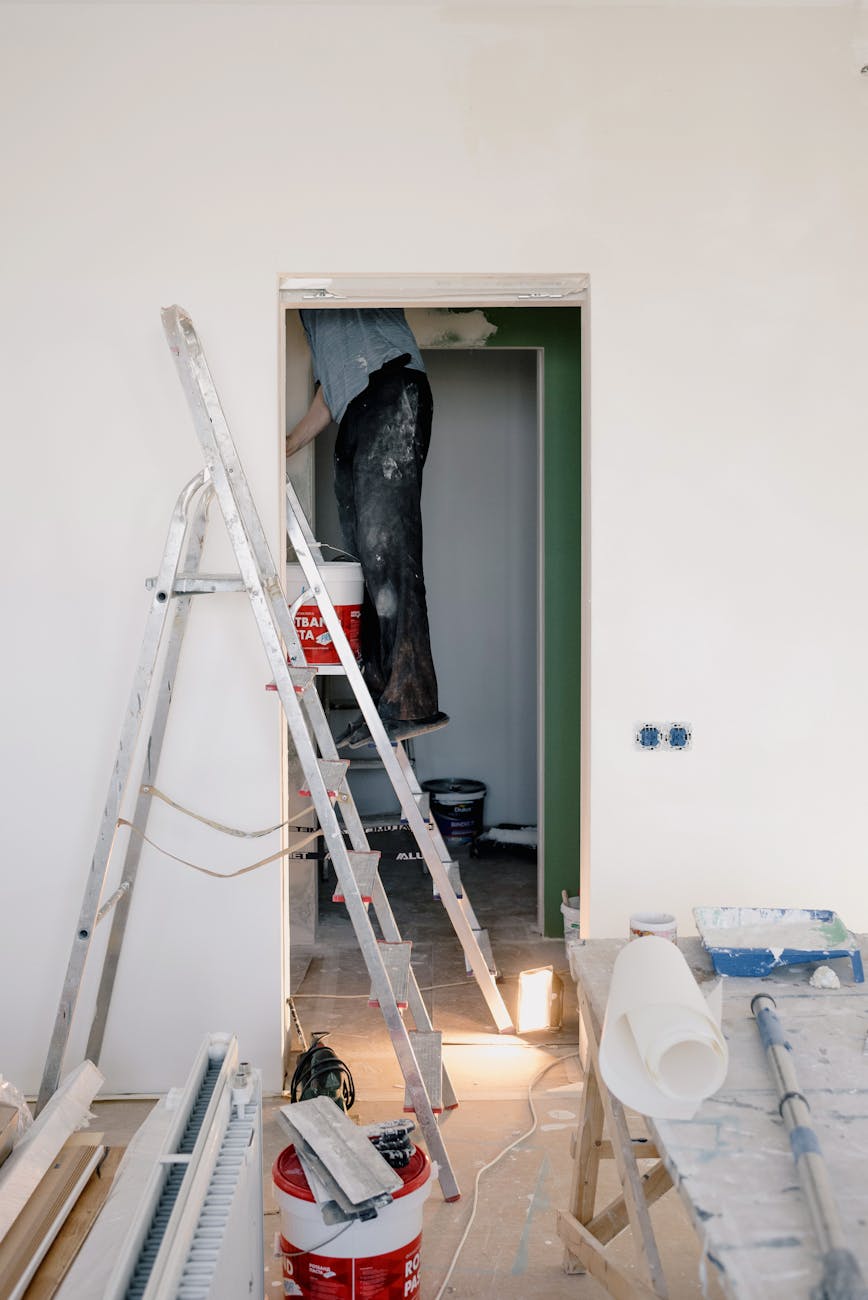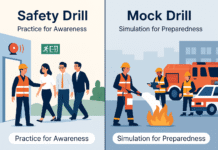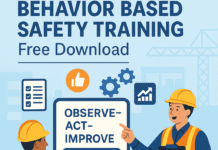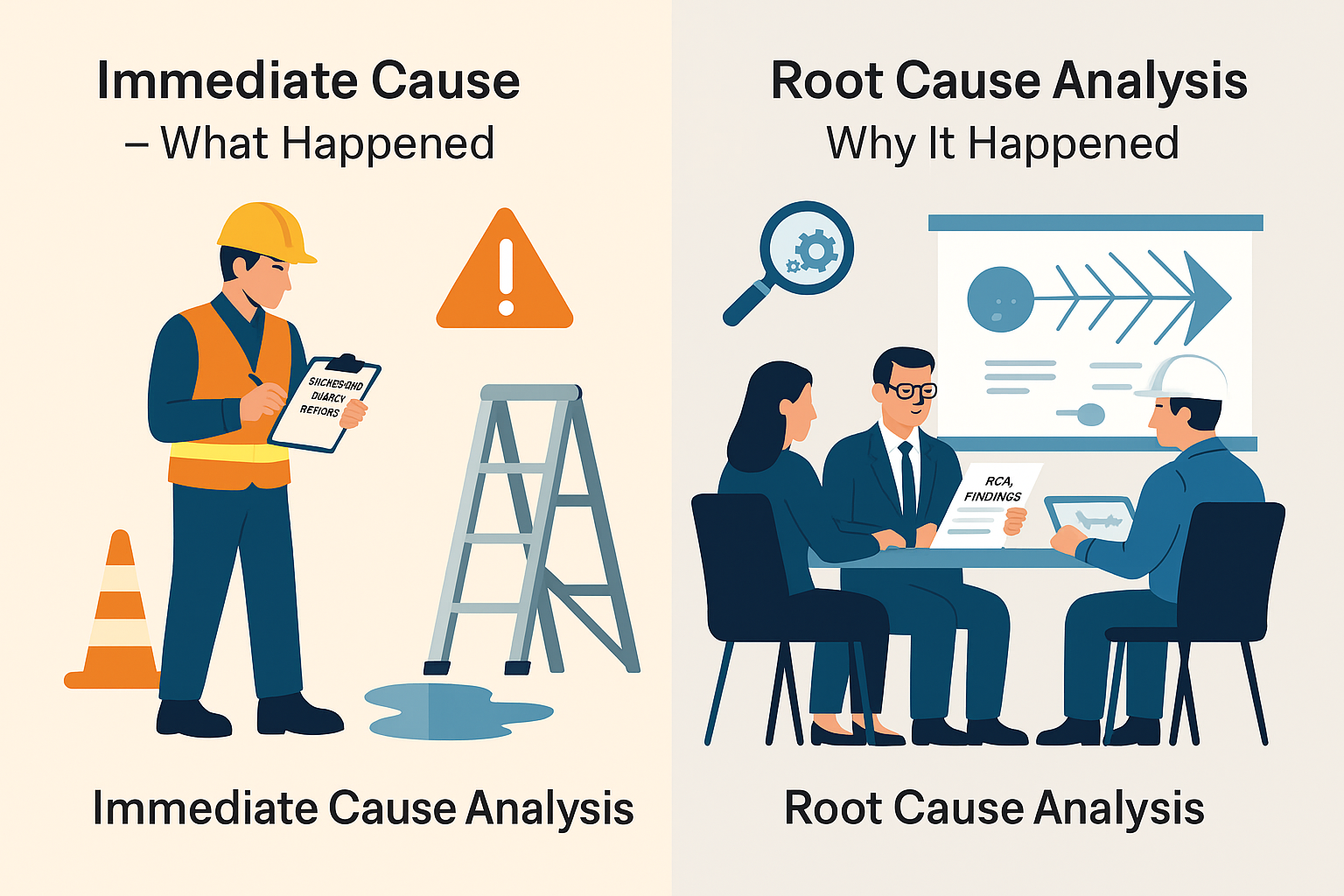
Ladder Safety HSE Training
Slide 1: Ladder Safety – HSE Training
Presented by: HSE STUDY GUIDE
Date: 24/04/2025
Good morning team!
Thanks for being here today. We’re going to talk about something that may seem simple — but causes far too many injuries every year: Ladders.
Our topic is Ladder Safety — and by the end of this session, you’ll have a clear understanding of how to choose, inspect, and use ladders safely.
Slide 2: Objectives of the Training
By the end of this session, you will be able to:
- Understand the risks involved in ladder use
- Choose the right ladder for the job
- Inspect a ladder before and after use
- Follow best practices for safe ladder setup and use
- Know how to report and respond to ladder-related hazards
Slide 3: Why Ladder Safety Matters
Let’s start with why this matters.
Did you know that falls from ladders are one of the leading causes of serious injuries in construction and maintenance work?
Injuries from ladders often involve:
- Broken bones
- Head injuries
- Internal injuries
- And in severe cases — fatalities
The good news? Almost every ladder accident is preventable.
Slide 4: Common Ladder Hazards
Here are the most common causes of ladder-related incidents:
- Using the wrong type of ladder
- Overreaching while on the ladder
- Placing ladders on unstable or uneven surfaces
- Climbing with hands full
- Using damaged or worn-out ladders
- Improper angle or positioning
- Not maintaining three points of contact
Recognize these hazards before they cause an accident.
Slide 5: Types of Ladders
It’s important to choose the right ladder for the job.
- Step Ladders: Self-supporting, for short heights
- Extension Ladders: Leaning ladders for higher work
- Platform Ladders: Provide standing space and rail support
- Multi-purpose Ladders: Adjustable for various uses
- Fixed Ladders: Attached to structures (usually need fall protection)
Each type has its purpose. Never improvise.
Slide 6: Ladder Selection Tips
Here’s how to pick the right ladder:
- Height – Must extend 3 feet above the work area (for access)
- Duty Rating – Check the load capacity (your weight + tools)
- Material – Use non-conductive ladders (like fiberglass) near electricity
- Condition – Must be in good working order — no damage or defects
When in doubt, ask your supervisor or refer to the manufacturer’s instructions.
Slide 7: Pre-Use Inspection
Always inspect ladders before each use:
- Check for cracks, dents, or bent rungs
- Make sure feet are intact and slip-resistant
- Look for loose rivets, steps, or rails
- Test the locking mechanisms
- Clean off any oil, grease, or debris
If it’s damaged — tag it and report it. Never try to fix it yourself unless authorized.
Slide 8: Safe Ladder Setup
Here’s how to set it up safely:
- Use the 4-to-1 rule: For every 4 feet in height, the base should be 1 foot out
- Place the ladder on a flat, stable surface
- Secure the top and bottom when possible
- Keep the ladder fully open and locked
- Don’t set up near doorways or high-traffic areas without barriers
Make sure it’s stable before climbing.
Slide 9: Safe Ladder Use
Let’s talk about how to climb and work safely:
- Always face the ladder
- Keep three points of contact (2 hands, 1 foot or 2 feet, 1 hand)
- Don’t carry tools in your hands — use a tool belt or rope
- Never overreach — keep your body between the side rails
- Don’t climb higher than the third step from the top
- Don’t exceed the weight limit — including your tools!
Work smart. One careless move can lead to a fall.
Slide 10: Ladder Storage and Maintenance
After use:
- Clean the ladder
- Store it in a dry, safe place, away from heat and chemicals
- Hang ladders horizontally on wall hooks
- Never leave ladders lying on the ground — they’re a trip hazard
- Perform regular inspections and log any maintenance needs
Treat your ladder like your tools — with respect.
Slide 11: Real Incident Example
Here’s a quick real-world story…
A maintenance worker used a metal ladder to fix a light near exposed wiring. The ladder made contact with a live wire. The result? Severe burns and hospitalization.
That’s why we always:
- Use non-conductive ladders near electricity
- Follow proper setup procedures
- And never cut corners, even for quick tasks
Slide 12: Key Takeaways
To wrap it up:
- Choose the right ladder for the job
- Inspect before every use
- Set up on stable, level surfaces
- Always maintain three points of contact
- Never overreach or rush
- If something doesn’t feel safe — stop and report it
Slide 13: Quiz or Q&A
Let’s do a quick quiz.
Question: What’s the 4-to-1 ladder rule?
(Pause for answers.)
That’s right — for every 4 feet of ladder height, the base should be 1 foot away from the wall.
Got any questions or ladder stories to share?
Slide 14: Thank You
Thanks, everyone, for your time and focus.
Ladder safety might seem basic — but it saves lives when done right. Let’s keep each other safe, one step at a time.
For more tips, check out HSE STUDY GUIDE on YouTube. Stay safe out there!
























